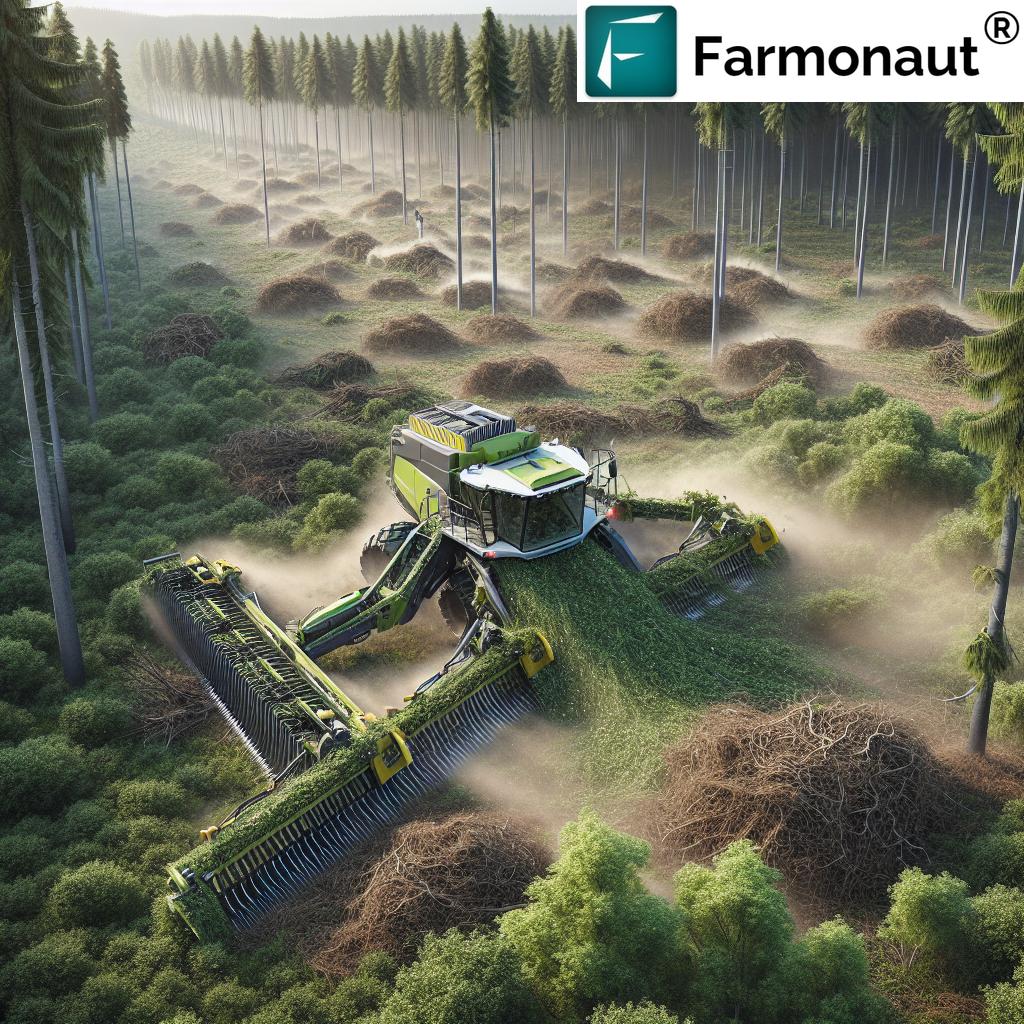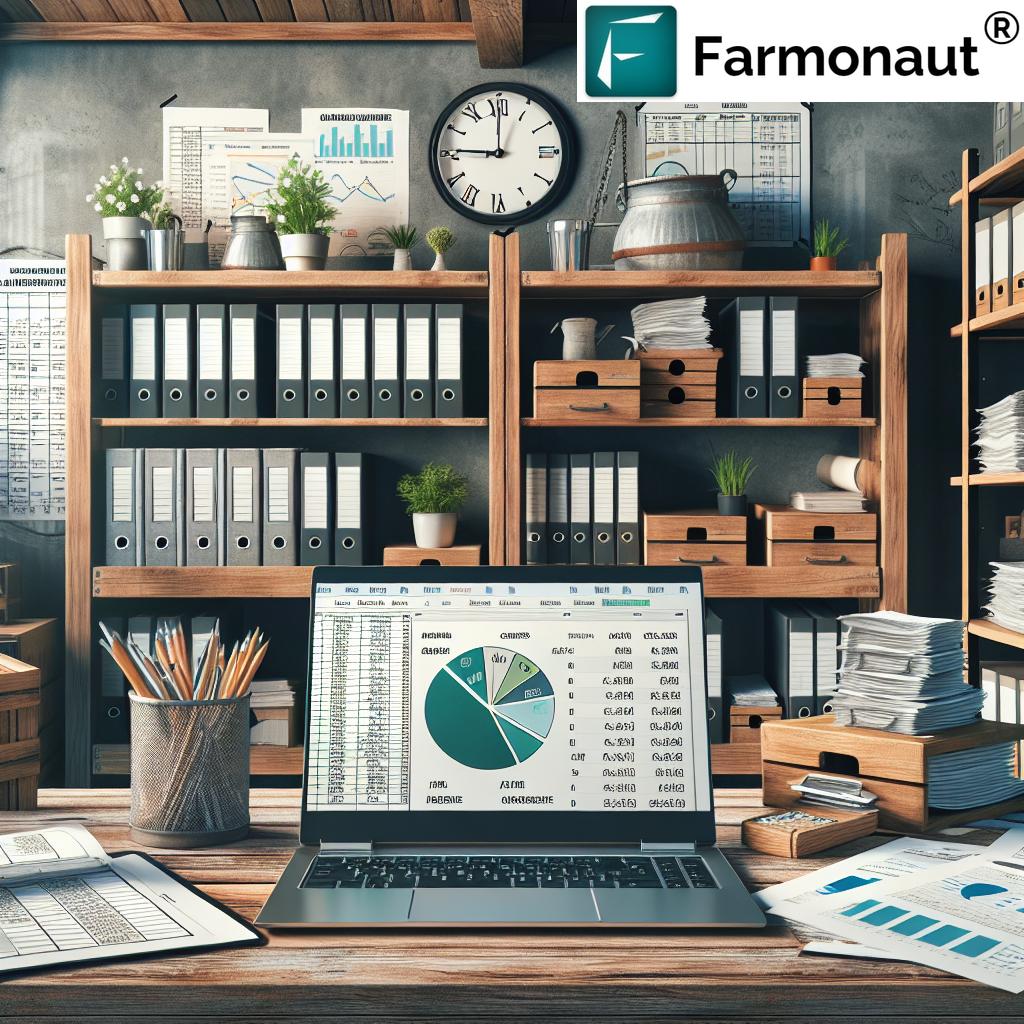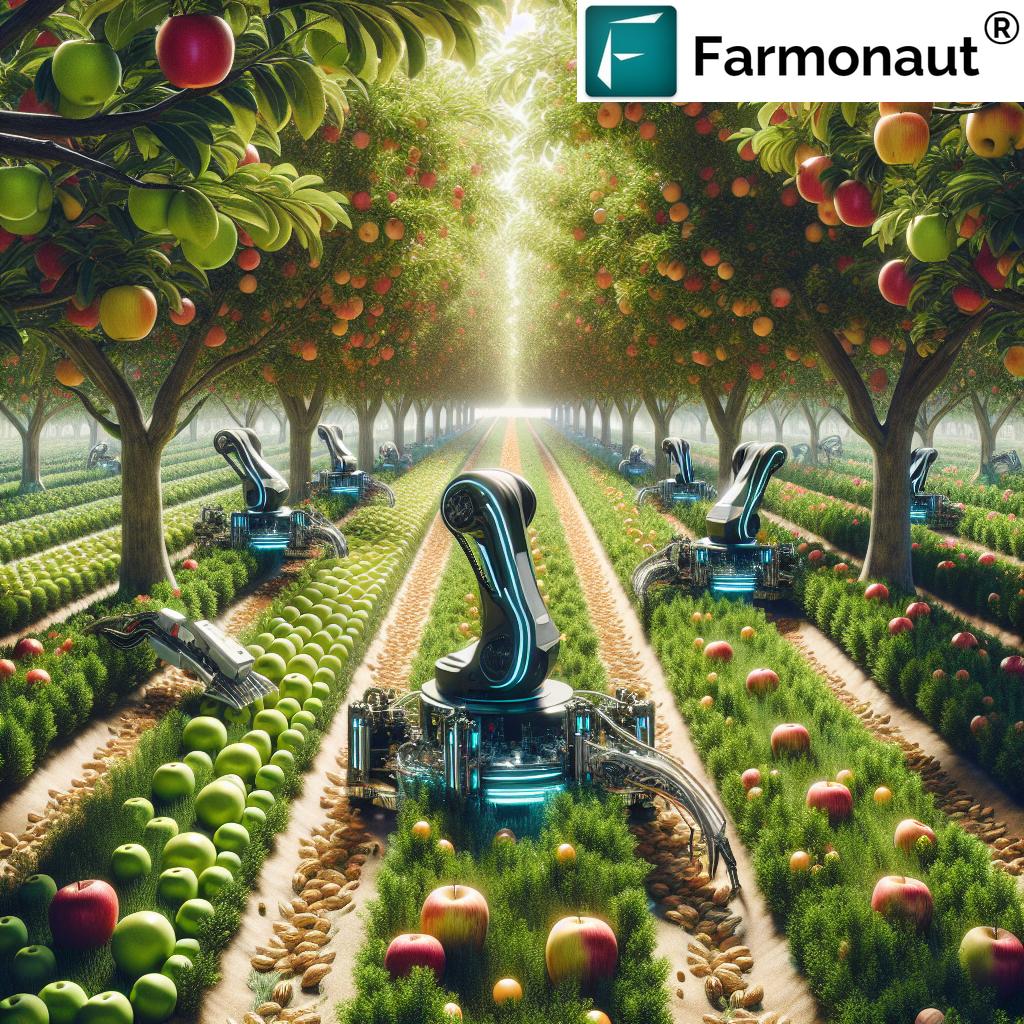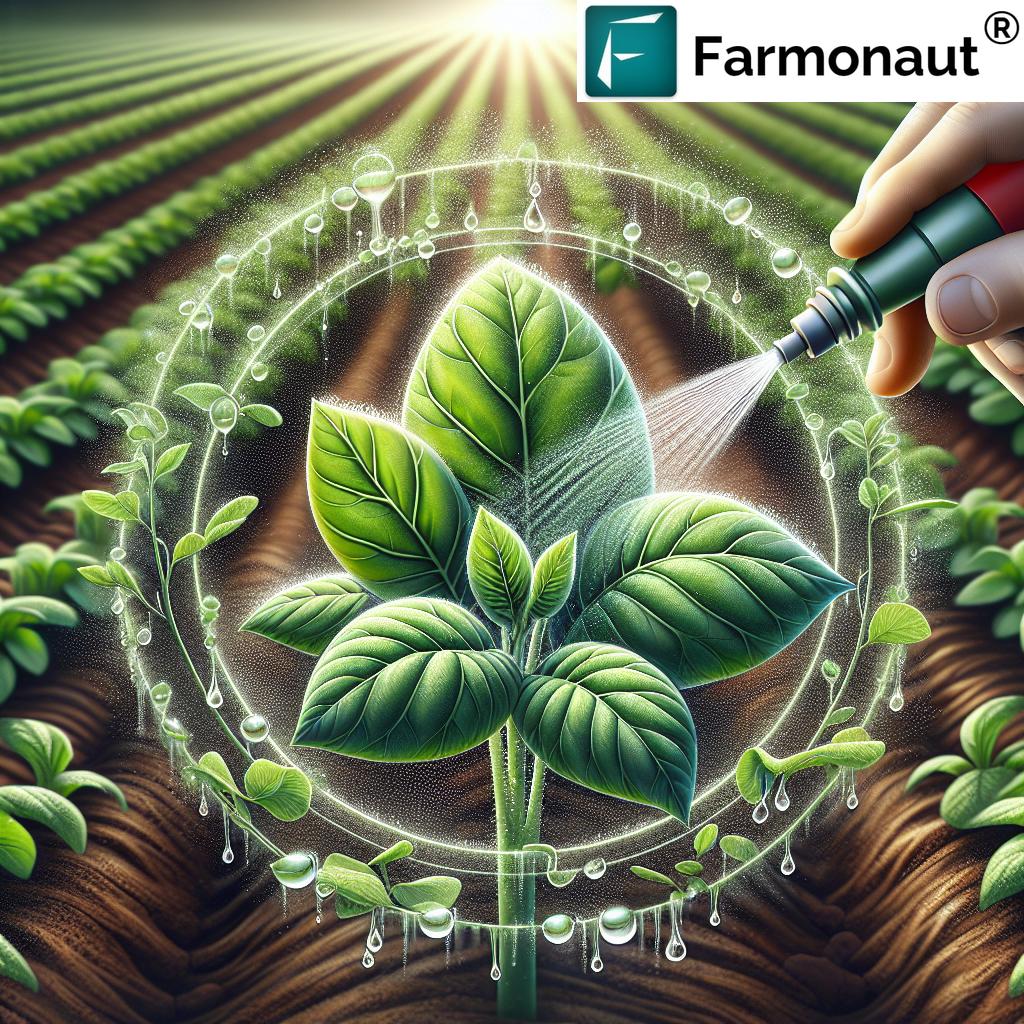Table of Contents
- Introduction to Step Agriculture in 2025
- Modern Step Agriculture Trivia
- 1. Planning and Preparation
- 2. Land Preparation
- 3. Selection of Seeds and Crop Variety
- 4. Sowing and Planting
- 5. Irrigation Management
- 6. Crop Nutrition and Fertilization
- 7. Pest and Disease Management
- 8. Harvesting
- 9. Post-Harvest Handling and Storage
- 10. Marketing and Distribution
- Step-by-Step Process vs. Modern Innovations Table
- How Farmonaut Empowers Step Agriculture in 2025
- FAQ: Step Agriculture & Modern Innovations
- Conclusion: Shaping Future Agriculture
“Modern step agriculture in 2025 can boost crop yields by up to 30% using advanced planning and selection techniques.”
Step Agriculture: 10 Key Steps of Agriculture Process – A Comprehensive Guide for 2025
Step agriculture remains the backbone of many economies worldwide, providing food, raw materials, and employment for billions of people. As we move into 2025 and beyond, the agriculture process step by step is evolving rapidly, integrating modern technological innovations to address the challenges posed by climate change, population growth, and resource limitations. This comprehensive guide explores the latest approaches to step agriculture, outlining each step of agriculture from planning to market, highlighting the role of agricultural technology, data-driven decision-making, and cutting-edge practices for improved productivity, sustainability, and profitability.
In a world where understanding and optimizing the agriculture step by step process is crucial for farmers everywhere, we delve into each stage while illustrating how step agriculture is transforming farming outcomes on a global scale.
What Is Step Agriculture?
Step agriculture refers to the systematic progression of activities undertaken in farming. Each step is intentionally designed to optimize yield, use resources efficiently, ensure environmental sustainability, and integrate modern technologies to maximize profitability. The process covers everything from planning and land preparation, seed selection, sowing, all the way to harvesting, storage, and entering the market.
By understanding this structured approach — and by adopting innovations in 2025 — farmers can enhance operations, better manage climate and resource challenges, and contribute to global food security.
Why Is the Step-by-Step Process of Agriculture Essential in 2025?
- Resource Optimization: Tighter control over water, nutrient, and land resources maximizes output and minimizes wastage.
- Resilience: Responding to climate change, pests, and soil health challenges demands agile, data-driven management at each step.
- Sustainability: Sustainable practices safeguard the environment, maintain productive soils, and protect future generations’ food security.
- Profitability: Strategic planning ensures better access to the market, reduced losses, and higher margins.
- Traceability: Digital records and blockchain offer traceability from field to market, increasingly demanded by consumers and regulators.
Step Agriculture Process: Step-by-Step from Planning to Market
Below, we explore the 10 key steps in step agriculture — each representing a vital stage in producing high-quality crops for 2025 and beyond. For every step, we highlight modern advances, proven methods, and practical examples. If you want a quick comparison, jump to our Step-by-Step Process vs. Modern Innovations Table.
1. Planning and Preparation (Step Agriculture Foundations)
The first step of agriculture is meticulous planning and comprehensive preparation. In 2025, this means deploying precision technologies, conducting soil testing, and integrating geospatial intelligence for informed decisions.
- Soil Health Assessment: Employ soil nutrient analysis (physical and digital) to determine fertility and health.
- Geographic Information Systems (GIS): Utilize GIS for mapping field characteristics — from soil types to microclimates.
- Drones & Satellite Imagery: Advanced drones and satellite-based mapping enable customized field plans. Satellite data highlights soil moisture, vegetation, and potential problem zones before sowing.
- Resource Allocation: Create customized planting schedules, input application plans, and water allocation.
This systematic approach allows farmers to make informed decisions, maximizing yield and ensuring resource efficiency tailored to both local and large-scale needs.
Example: In 2025, global step agriculture leverages Farmonaut’s large-scale farm management apps for remote sensing, making data-driven plans accessible to both individual and corporate stakeholders.
Key Benefits:
- Maximize crop yield through smart zoning and data-backed crop selection.
- Reduce risk from climate variability by tracking real-time forecasts and soil moisture via satellite technology.
- Cut costs and increase sustainability by eliminating guesswork in resource allocation.
2. Land Preparation: Setting the Stage for Sustainable Growth
After planning, land preparation is initiated to create a suitable seedbed. The process includes:
- Tilling, Plowing, Leveling: Physical and mechanical techniques to break up soil and ensure even terrain.
- Minimum/No-Till Farming: Sustainable practices like minimal tillage reduce erosion, preserve soil structure, and maintain organic matter.
- Incorporate Organic Matter: Applying compost, manure, or crop residues based on soil nutrient analysis.
- Fertilizer Application (Site-Specific): Use of advanced blending methods after testing as per crop need.
These techniques enable farmers to improve soil fertility while maintaining an environmental balance, reducing chemical input, and preserving long-term health of the land.
“Over 70% of farms adopting innovative step-by-step processes report improved sustainability and resource efficiency.”
3. Selection of Seeds and Crop Variety: Building Resilience & Profitability
The selection phase is among the most significant steps of agriculture — impacting both yield and sustainability. In 2025, farmers select genetically improved seeds and climate-resilient varieties via:
- Genetically Enhanced Varieties: Designed for drought, pest, and disease resistance.
- Suitability & Rotation: Assess climate, soils, water availability, and market demand to optimize rotational plans.
- Data Platforms: Digital apps suggest best seed options based on local field characteristics (e.g., Farmonaut satellite mapping).
- Legal Compliance: Ensuring seeds are certified and compliant with regulations.
Access to data-driven seed selection is now global. For advice or updates, our platform monitors fields in real-time—supporting better decisions during this crucial step.
4. Sowing and Planting: Precision Planting for Maximum Emergence
Sowing and planting are fundamental agricultural steps. Proper planting ensures crop uniformity, healthier growth, and reduced losses.
- Seed Drills & Planters: Deploy precision machinery to optimize depth, spacing, and density of seed placement.
- Reducing Wastage: Automation in seeding reduces seed wastage, saving cost and maximizing germination rates.
- Innovative Methods: Explore hydroponics, aeroponics, vertical farming and urban agriculture for limited space or alternative environments.
- Data-Logged Schedules: Platform-based reminders ensure timely planting as per crop, soil, and climate variables.
These techniques offer unprecedented control over crop populations, reducing waste, and boosting yield. Through satellite-enabled monitoring, large farm managers can remotely track field completion and planting uniformity.
5. Irrigation Management: Water-Smart Farming for a Drier World
Water is among agriculture’s most crucial resources. By 2025, irrigation management blends traditional wisdom with digital innovation:
- Drip & Sprinkler Systems: These offer targeted watering, reducing wastage compared to flooding.
- IoT Integration: Sensors and AI-driven schedules provide real-time data on soil moisture, activating irrigation as needed.
- Satellite NDWI Monitoring: Platforms like Farmonaut assess water stress and help manage irrigation remotely.
By leveraging data and automation, farmers are reducing water consumption by up to 30% while ensuring crops receive adequate moisture at vital growth stages—directly improving yield and sustainability.
For deeper insights on remote field irrigation, explore the Farmonaut API and developer documentation.
6. Crop Nutrition and Fertilization: Tailored Nutrient Management for Optimum Growth
Maintaining the right nutrient balance is essential. In the step agriculture approach, fertilization adapts to field conditions in real-time:
- Precision Fertilizer Application: Guided by satellite and sensor data, apply nutrients only where needed, reducing cost and chemical usage.
- Biofertilizers & Organic Amendments: Sustainable alternatives build soil microbiome health and reduce chemical dependency.
- AI-Driven Recommendations: AI platforms parse field data, weather, and crop demand—suggesting what, when, and how much to apply for maximum impact.
This data-rich, targeted approach supports higher yields with lower environmental impact and minimizes wastage of expensive inputs.
Would you like to monitor your field and automate nutrient management? Our carbon footprint tracking tools measure, report, and verify sustainability credentials across your entire operation.
7. Pest and Disease Management: Precision Protection—Reducing Losses, Reducing Chemicals
Effective pest and disease management is a vital step for reducing losses and safeguarding both productivity and profitability:
- Integrated Pest Management (IPM): Combines biological controls, genetic resistance, and precision application of pesticides.
- Early Detection with AI: Satellite and computer vision identify outbreaks early, enabling timely intervention and reducing chemical inputs.
- Smart Scouting: Use of drones, mobile apps, and predictive analytics platforms for field-level monitoring.
- Organic Options: Easily implement non-chemical interventions and monitor efficacy using real-time digital advisory systems.
Systems like Farmonaut help minimize both crop losses and chemical use by alerting users to early-stage risks—supporting a cleaner, safer supply of agricultural food.
8. Harvesting: Timeliness, Mechanization, and Market Readiness
The harvesting step marks the culmination of all early efforts. In 2025:
- Timely Harvesting: Maximize crop quality and revenue by using digital tools to predict, schedule, and monitor maturity and market readiness.
- Automated Harvesters: GPS-enabled harvesters work with field data for efficiency, reducing labor cost and post-harvest losses.
- Yield Mapping: Satellite and drone imagery provide post-harvest yield analytics, improving future planning.
Precision harvesting means better food quality, less wastage, and stronger profits for farmers, while supporting continuous improvement for each step of agriculture.
9. Post-Harvest Handling and Storage: Reducing Losses, Preserving Value
Post-harvest losses can undermine all previous work. The step agriculture approach to handling and storage uses:
- Controlled Storage: Cold storage, controlled atmospheres, or vacuum packaging extend shelf life and prevent spoilage.
- Monitoring Systems: Sensors track temperature, humidity, pest presence, and batch location for quality assurance.
- Digital Chain-of-Custody: Blockchain-powered traceability platforms (like Farmonaut Traceability) provide consumer transparency and facilitate recalls or audits.
- Reduced Wastage: Automation in sorting and grading ensures only prime produce reaches shelves—lowering overall food waste.
Connected systems ensure crops maintain their quality from field to market, enhancing value and consumer confidence.
10. Marketing and Distribution: Digital Marketplaces & Direct Access
The final step in the agriculture process is moving your product to consumers at the best price.
- Digital Platforms: Many farmers now market directly using e-marketplaces, boosting income and competitive choice.
- Cooperative Models: Collectives enable smallholders to negotiate better, secure storage, share logistics, and access broader markets.
- Traceable Supply Chains: Modern consumers and regulators demand digital transparency. Blockchain and QR codes enable field-to-fork traceability.
Ready to streamline the supply chain? Learn how farm fleet management platforms can reduce transportation costs, increase operational safety, and provide real-time tracking of your commodity’s journey.
Step-by-Step Process vs. Modern Innovations: 2025 Comparison Table
| Step Number/Name | Traditional Method | 2025 Innovation | Estimated Benefit | Example Tool/Technology |
|---|---|---|---|---|
| 1. Planning & Preparation | Manual inspection, static crop plans | Satellite mapping, GIS, drones, AI advisory | 15–20% yield boost; 25% resource savings | Farmonaut satellite, Jeevn AI |
| 2. Land Preparation | Physical tillage, plowing, random fertilizer | No/minimum-till, data-driven organic inputs | Up to 40% erosion reduction; improved soil health | Precision soil analysis, smart implements |
| 3. Seed & Crop Variety Selection | Local seeds, limited knowledge | Genetically resilient, data-advised seed selection | Up to 30% increase in resilience and yield | Seed selection apps, Farmonaut field mapping |
| 4. Sowing & Planting | Manual broadcasting/planting | Machine-based precision sowing, vertical farming | 15% reduced seed waste; 20% faster emergence | Smart seeders, vertical hydroponics |
| 5. Irrigation Management | Flood/furrow, set schedules | IoT drip/sprinkler, satellite-driven moisture mapping | 25–35% water saving, stable yields | Smart irrigation, Farmonaut NDWI |
| 6. Crop Nutrition | Uniform fertilizer, manual judgment | AI-driven, variable rate, biofertilizers | 10–15% input savings; healthier soils | Farmonaut analytics, fertilizer sensors |
| 7. Pest & Disease Management | Calendar-based sprays, hazard to environment | Smart scouting, precision spraying, IPM | Up to 50% reduction in pesticide use, fewer losses | Farmonaut alerts, AI pest monitors |
| 8. Harvesting | Manual, labor-intensive, undirected timing | Automated harvesters, digital maturity alerts | 10–20% less labor; higher quality; less waste | GPS combines, platforms with harvest AI |
| 9. Post-Harvest Handling | Basic storage, limited logistics | Automated climate storage, blockchain traceability | Up to 40% loss reduction; improved shelf life | Controlled warehouses, traceability apps |
| 10. Marketing & Distribution | Auctions, local traders | E-marketplace, digital supply chain, live tracking | Access to new buyers, stronger pricing, direct sales | Online markets, Farmonaut fleet & logistics |
How We at Farmonaut Empower Step Agriculture in 2025
As a satellite technology leader, Farmonaut provides advanced, affordable data-driven solutions for all actors in the agriculture process step by step. Our technologies support modern farming by:
- Delivering real-time crop health, soil, and water data to improve every step of agriculture.
- Enabling access to traceability tools for supply chain transparency and compliance.
- Streamlining resource management with satellite-powered fleet tracking and logistics for efficient harvesting and distribution.
- Utilizing AI advisory systems to empower farmers of all scales with customized step-by-step plans for climate resilience and higher productivity.
- Supporting large scale operations with scalable, modular platforms—see our Large Scale Farm Management solution.
- Supporting banks and insurance providers in crop loan and insurance verification to improve access to finance and reduce risk.
- Promoting environmental sustainability via GHG & carbon footprint monitoring at field and crop level.
Our vision is to make world-class satellite and AI solutions accessible for all, strengthening the agriculture step by step process for a smarter, fairer future.
Frequently Asked Questions: Step Agriculture & Innovations in 2025
What is step agriculture, and why is it crucial in 2025?
Step agriculture refers to executing the agriculture process through a sequence of intentionally designed phases — from planning to marketing — to maximize yield, sustainability, and profitability. In 2025, this approach is crucial due to evolving challenges like climate change, resource shortages, and a growing global population.
What innovations most impact the agriculture step by step process?
Key innovations include satellite imagery, AI advisory systems, blockchain-based traceability, IoT-enabled irrigation, digital data platforms, and automated machinery. These help optimize every step of agriculture for better outcomes.
How does Farmonaut fit into the modern agriculture step by step process?
We at Farmonaut provide real-time monitoring, resource management tools, and traceability solutions—empowering farmers, businesses, and governments to manage fields, crops, and supply chains with unprecedented accuracy and ease.
How can farmers reduce environmental impact using modern step agriculture?
By employing precision irrigation, targeted fertilization, minimum tillage, and digital pest management, modern step agriculture drastically cuts down on water/chemical use and preserves soil and biodiversity. Carbon tracking tools help benchmark and improve sustainability efforts.
What are the best tools for small farmers to access the benefits of step agriculture?
Affordable satellite-based apps, digital traceability platforms, and community farming tools make step agriculture’s innovations achievable for all. Many features are available via web, Android, or iOS apps (see above).
Where can I learn more about APIs for integrating field monitoring in my agritech platform?
Find technical resources at Farmonaut API and developer documentation at API Docs.
Conclusion: Step Agriculture for a Resilient & Profitable Future
The essence of step agriculture lies in its structured, systematic, and innovation-driven approach to the agriculture process step by step. By fusing traditional knowledge with modern technology, this method empowers farmers and agricultural businesses to overcome the challenges of 2025 and beyond—delivering higher yields, resource efficiency, and sustainability.
For the global agricultural community, adopting the step agriculture model ensures not only the profitable and productive future of farming, but also supports food security, environmental stewardship, and universal growth. As new digital tools, AI, and satellite platforms like Farmonaut become more accessible, the opportunity is open to every stakeholder—from smallholders to governments—to thrive in the modern step-by-step process of agriculture.
Whether seeking to maximize yield, reduce costs, build resilient supply chains, or strengthen sustainability, following the 10 steps outlined here will guide agriculture into a smarter, safer, and more rewarding future.
Discover more on Farmonaut — Satellite Insights Driving Step Agriculture for a Brighter Future.










